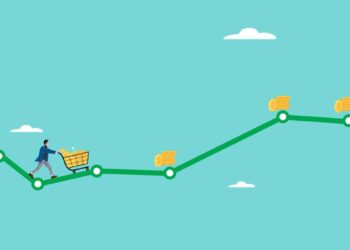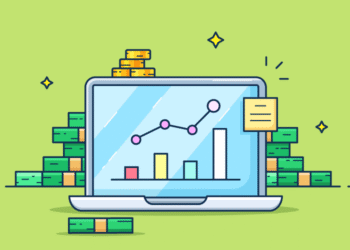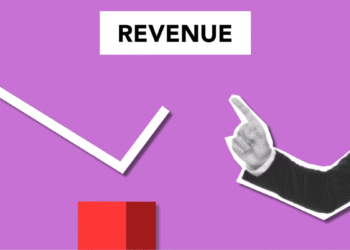Here’s a hard truth I learned after spending too much money on ads: traffic doesn’t matter if no one’s buying.
I had visitors. I had clicks. But my conversion rate? Barely 1%.
That’s when I discovered Conversion Rate Optimization (CRO) and honestly, it changed everything.
What Is Conversion Rate Optimization?
Let’s keep it simple: CRO is making small changes to your store so more people do what you want them to do — like buy a product, sign up for your list, or download a freebie.
If 100 people visit your store and 5 buy something, your conversion rate is 5%. CRO is how you turn that into 6, then 7, then 10 — without spending more on traffic.
It’s not about tricks or hacks. It’s about understanding what your customer needs, removing friction, and giving them a clear reason to say yes.
If you’re new to using data to make smart changes, check out this beginner’s guide to e-commerce analytics. It’s the perfect foundation for any CRO strategy.
Why CRO Matters? (Especially If You’re on a Budget)
When you’re starting out (or scaling), it’s tempting to throw money at ads or post endlessly on social. But here’s the thing:
-
More traffic = more cost
-
Higher conversion = more profit
CRO helps you:
-
Get more from every visitor
-
Lower your customer acquisition cost (CAC)
-
Build better experiences that increase trust and retention
-
Make smarter decisions based on real user behavior
One powerful way to pinpoint where your site is losing sales? Try using heatmaps to improve conversions. They give you visual insights you can act on fast.
How to Calculate Your Conversion Rate?
This part’s easy. The formula is:
Conversion Rate = (Conversions / Total Visitors) x 100
Example: If 40 people bought something out of 1,000 visitors, your conversion rate is 4%.
You can calculate it:
-
Per page (like product pages or landing pages)
-
Per traffic source (email, social, search)
-
Store-wide, using tools like GA4, Payhip, or Shopify
Once you know your baseline, that’s where the real testing begins.
Want to go deeper? Learn how to identify and fix sales drop-off points, so you’re not just measuring — you’re improving.
Tools I Use to Improve My Conversion Rate
You don’t need a big tech stack to get started. Here’s what I use regularly:
-
Hotjar: Heatmaps + session recordings. Shows me where people get stuck.
-
Microsoft Clarity: Free alternative to Hotjar, super useful.
-
Google Analytics (GA4): Tracks traffic, bounce rate, and conversions.
-
Klaviyo: My email flows are fully optimized with A/B testing.
-
Shopify or Payhip: Their dashboards show conversion trends by product.
Start simple. Even just watching a few session recordings can show you what to fix next.
And if you’re serious about testing, this guide on A/B testing for e-commerce success will show you what to test — and how to make each test count.
What to Test and Optimize? (Real Examples)
This is where the fun begins. I’ve run dozens of tests — some flopped, some gave me 15–20% lifts.
Here’s what I test most often:
-
CTA buttons: “Add to Cart” vs “Buy Now”
-
Headlines: Benefit-driven vs curiosity-based
-
Images: Lifestyle vs flat lay
-
Pricing: Showing discounts vs full price
-
Trust badges: Security icons, testimonials
-
Forms: Short vs long
-
Popups: Discount vs lead magnet
-
Checkout fields: Remove distractions = higher completion
Just test one thing at a time, give it a few hundred visitors, and see what moves the needle.
My Go-To CRO Best Practices
After years of trial and error, these are the tips I always come back to:
-
Mobile first: Most of your visitors are on their phones
-
Above-the-fold clarity: Don’t make users scroll to know what you offer
-
Speed matters: Slow sites kill conversions
-
Use social proof: Reviews, ratings, testimonials
-
Simplify the path to purchase: Fewer clicks = more sales
-
Be specific, not clever: “Boost your productivity” beats “Get things done-er”
And always, watch how real users behave. Numbers are helpful, but behavior shows intent.
If you want to go even deeper into analytics, I highly recommend this walkthrough on using data to reduce cart abandonment. It ties directly into CRO wins.
Final Thoughts
You don’t need a team of analysts or a massive ad budget to boost sales.
You just need to start thinking like your customer.
Conversion Rate Optimization is a mindset. Test something, measure it, learn, and repeat.
Once I made CRO part of my weekly workflow? Sales became predictable. And now, every page of my store earns its keep.
Start where you are. Fix what’s broken. And optimize as you grow.








